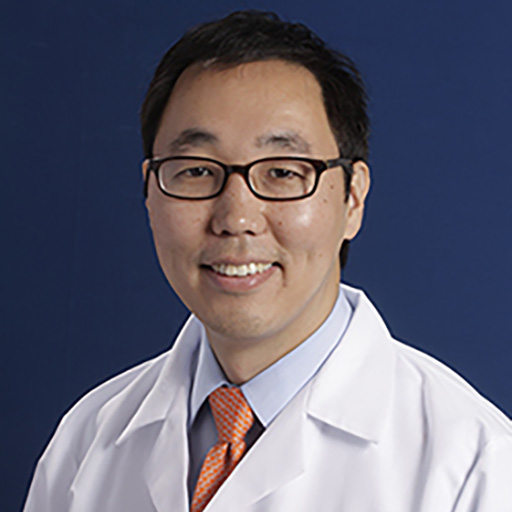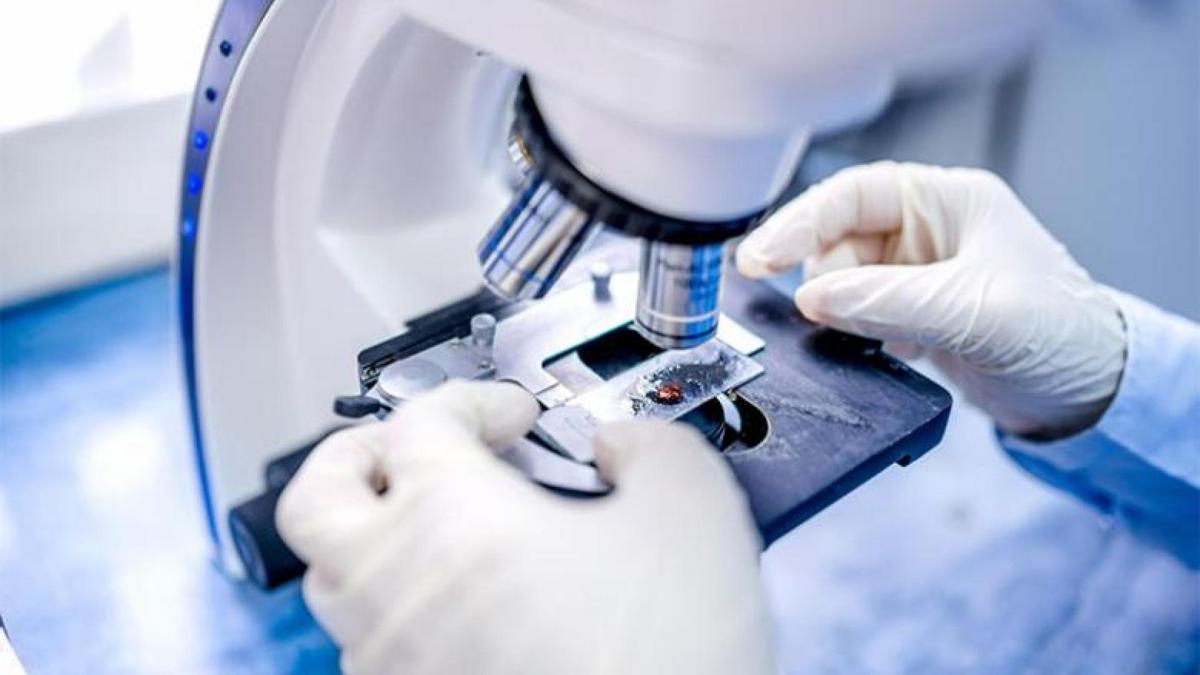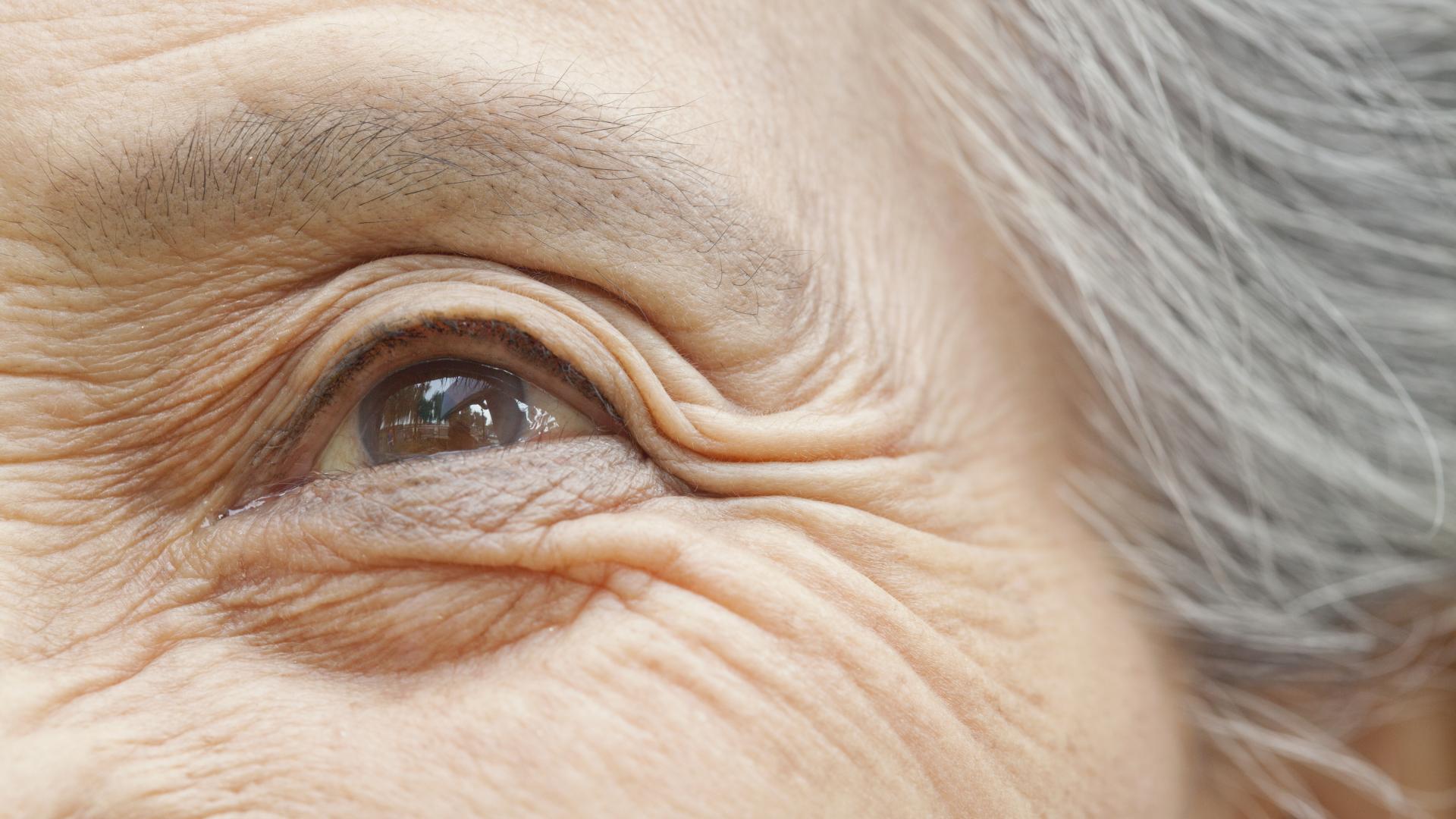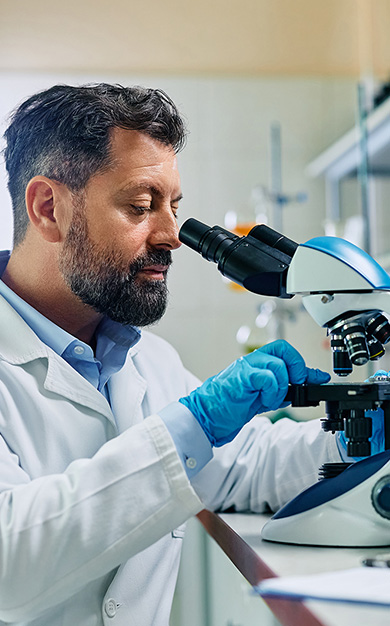Future Hope for Geographic Atrophy
Featuring
Dr. Benjamin Kim
Assistant Professor of Ophthalmology at the Hospital of the University of Pennsylvania


Dr. Benjamin Kim
Assistant Professor of Ophthalmology at the Hospital of the University of Pennsylvania

Dr. Benjamin Kim is an Assistant Professor of Ophthalmology at the Hospital of the University of Pennsylvania. His areas of research expertise include age-related macular degeneration, diabetic retinopathy, geographic atrophy, choroidal neovascularization, retinal neovascularization, clinical trials, and retinal imaging.
MICHAEL BUCKLEY: Hello, I’m Michael Buckley, and welcome to the November 2020 BrightFocus Chat. Today’s Chat is titled “Future Hope for Geographic Atrophy.” Let me tell you about today’s guest speaker. His name is Dr. Benjamin Kim. He is an assistant professor of ophthalmology at the University of Pennsylvania’s Medical School in Philadelphia, and he also sees patients as an ophthalmologist in the Penn Medical System. At BrightFocus, we’re very, very proud—through the generosity of our donors—to have the chance to work with Dr. Kim over the years as he’s worked on better understanding in treating age-related macular degeneration, and hopefully, we’ll have a chance to hear about some of that work today. So, Dr. Kim, welcome to the BrightFocus Chat. I am wondering if you could just start off by telling us a little bit about yourself.
DR. BENJAMIN KIM: Sure. First, I do want to thank you, Michael, for inviting me to participate in this really terrific series for patients. I appreciate the opportunity. I’ve been at the University of Pennsylvania now for 8 years, and as you said, I’m involved in both patient care and research. I do actually spend about 75 percent of my time seeing patients, many of whom do have age-related macular degeneration, and then a quarter of my time—at least, really, or more of that if you include all the nights and weekends—is spent doing clinical research. One of my ongoing strong research interests has been in the geographic atrophy form of macular degeneration, and I had recently completed a phase 2 smaller study in geographic atrophy, which turned out to have negative data but was something involved in this field. And I also was the chair of the safety monitoring committee for the Apellis Pharmaceutical phase 2 study, which now has a drug that’s in phase 3 clinical trials for geographic atrophy.
MICHAEL BUCKLEY: Thank you for sharing your background. Kind of the career-day type of question—how did you end up in the fields of science and medicine?
DR. BENJAMIN KIM: For me, it really was not a hard decision. Ever since I was young, I always had an interest in science when I was in school, and my father was a primary care physician and still is practicing, so I had a lot of exposure to the field of medicine. I … as a career choice, I really just loved the ability to be involved in both medicine with patient care but also science with the research that I’ve been involved in, because I love the ability to have a daily impact positively … positively impact patients on an … every day when you see patients and take care of them but also have the ability to get involved in medical research, which allows you to really have a broader, long-term scale opportunity to make a positive impact.
MICHAEL BUCKLEY: It sounds like an exciting balance between the patient care and the long-term research that you do with BrightFocus and others. I know most of us just generically talk about macular degeneration as an umbrella term, but could you tell us a little bit about a couple of the advanced stages of AMD, such as wet AMD and geographic atrophy? What … how would you describe these two? Do they have similarities, or what are their differences?
DR. BENJAMIN KIM: Many patients have heard these terms wet and dry AMD, and wet AMD is one of the advanced forms of macular degeneration, where you develop abnormal blood vessels under the retina that can bleed and leak fluid, thereby damaging the retinal tissue and sometimes causing scarring and atrophy in the area. This development of these blood vessels and the downstream ramifications of it lead to decreased vision for these patients. Geographic atrophy, on the other hand, is when you have what’s referred to as atrophy or death of the cells that form the outer portions of the retinal tissue. Geographic atrophy is an advanced stage of dry AMD, so there is no abnormal bleeding or leaking of blood vessels that you get in the wet form, and, in contrast, you get these patches or geographic areas of cell loss that develop and that are associated with parts of the retina that do not function and cannot properly sense light or properly sense an image in that part of the retina.
MICHAEL BUCKLEY: Is it possible somebody could have one form in one eye and a different form in the other eye?
DR. BENJAMIN KIM: Yes, it is. That’s an interesting question. You have some patients that do have both eyes with wet AMD and other patients that have both eyes with geographic atrophy, but then you can have patients that have the wet form in one eye and geographic atrophy in their other eye. The exact reasons for that are not completely understood. Furthermore, you can actually have an eye with wet AMD that develops atrophy in the eye, which is, in fact, a major cause contributing to the vision loss in wet AMD eyes. And then you can also have eyes with geographic atrophy that convert to the wet form of macular degeneration. There definitely is crossover, as well as one eye with wet and one eye with dry, that can happen.
MICHAEL BUCKLEY: Thanks. That’s interesting. We get that question a lot here on the Chats. Turning to the similarities and differences between wet AMD and geographic atrophy, are there treatments available for one or both of those forms of AMD?
DR. BENJAMIN KIM: For quite a while now, wet AMD has had treatment that comes in the form of eye injections. Many patients have heard of them and probably some of the patients on the line maybe receiving these injections, but these treatments were a major breakthrough for the field of wet AMD treatment because they really can stabilize the vision and—in a good number of cases—improve the vision. This is in contrast to geographic atrophy, which remains an incredible unmet need for our field. Geographic atrophy is estimated by itself to still be causing around 20 percent of legal blindness in North America, and there still is not an approved treatment for geographic atrophy, so I consider it one of the highest priorities in the field of ophthalmology—finding a treatment for GA.
MICHAEL BUCKLEY: Wow. That’s a pretty startling statistic to hear that it’s 20 percent of the legal blindness in older populations. In your experience, are we getting better at diagnosing and managing geographic atrophy in the absence of a treatment? Are we getting better at understanding it and helping the patients along the way?
DR. BENJAMIN KIM: We are. I would say, as a clinician, the diagnosis of geographic atrophy has not been that difficult, but really, what has been a challenge over the years and where we have made progress is just understanding more and more what is going on in geographic atrophy, what makes some lesions perhaps develop faster or grow faster than other lesions, the various mechanisms that could be at play. It’s turned out that, as we’ve learned more, there certainly have been even more questions that have come up that remain to be answered as the next frontier in our understanding, but I think that it’s been a long road of understanding geographic atrophy, and we really have started to make some progress. I know that seeing my patients with geographic atrophy, I do feel the weight of the conversations that I have with them when patients come in and tell me that they have lost more vision and are now unable to read or perform some of the daily tasks that they love to do. And the strong wish that, really, the patient and I feel that there should be a treatment that we can offer them, so while it’s been a long road of development for treatments for geographic atrophy, I really do think that now there are some really promising drugs and clinical trials that we can be hopeful for.
MICHAEL BUCKLEY: That gives us a great hope for the future, and we’ll turn to an overview of some of those treatments in a moment. Before that, there’s the treatment side of the coin, and then there’s the daily life—the lifestyle: exercise, diet, etc. Are there things that—in lieu of a treatment—that people can do with geographic atrophy that are in their best interest?
DR. BENJAMIN KIM: I do think there are things people can do, and I think that especially preventative measures even before geographic atrophy can really be taken. I think that a healthy lifestyle, healthy diet, cannot be underestimated. We know, for example, smoking is an incredibly large risk factor for macular degeneration, and smoking cessation today for a patient can make a difference, we think, in the future changes in their macular degeneration. We know that what are called the AREDS2 vitamins—I’m sure a lot of the patients on the line have heard of these vitamins, which are an antioxidant formulation studied by the National Eye Institute and found to be helpful for the intermediate stage of the disease. Those vitamins can potentially slow down development of advanced forms of macular degeneration and are worthwhile to take. And, of course, regular eye exams, not forgetting that your ophthalmologist can pick up things in your eyes before you may notice a change in vision. So, there are certainly simple things that can be done—including healthy lifestyle, smoking cessation—that can really help the preventative measures and that can allow patients to feel some empowerment that they do have some control over what’s going on to some extent.
MICHAEL BUCKLEY: Dr. Kim, you mentioned the smoking cessation. I think a lot of us that aren’t doctors understand why smoking is bad for lungs and lung disease and lung cancer and all that. Why … how does smoking affect your eyes?
DR. BENJAMIN KIM: I think one of the biggest ways that smoking can affect your eyes, as it does many parts of your body, is that it’s considered to create a lot of oxidative stress on the tissue, and oxidative stress is considered one of the major starting mechanisms for macular degeneration. There is a wealth of data suggesting the role of oxidative stress, but also the role of smoking as a risk factor for macular degeneration. Having said that, there is still ongoing research trying to really further understand how smoking exactly affects macular degeneration. I know that—in fact, I’ve seen some study that is currently ongoing from Massachusetts that the BrightFocus Foundation is funding, and so more work needs to be done, but it has to do with the least oxidative stress but essentially other mechanisms, as well.
MICHAEL BUCKLEY: You pointed out diet and exercise. Do you have patients that ask you, “Is it too late?” If these are folks that are a little bit older or their eyesight is starting to deteriorate. Is it … should somebody try to change that part of their life, regardless of their age or vision conditions?
DR. BENJAMIN KIM: Absolutely. I think that we should never feel like it’s too late to live a healthier lifestyle. Not only would that have ramifications on that patient’s entire health, but it can be beneficial at the eye, and I think we should never feel like it’s too late, so to speak. I think it can only be helpful, and I encourage that for my patients when they ask me that question.
MICHAEL BUCKLEY: Thank you. We have a question from a listener wondering, are the different forms of geographic atrophy … of AMD that you mentioned, are any or all of these forms genetic? People worry about their children and grandchildren … should they be?
DR. BENJAMIN KIM: AMD and geographic atrophy as part of AMD are considered a complex disease, and what that means is that there’re probably multiple factors that go into causing one patient to develop macular degeneration as opposed to another. Some of those factors are environmental—for example, we mentioned smoking and, potentially, the role of diet—but also there is a large literature showing genetic risk factors for macular degeneration. So, people with certain gene variants have increased risk for macular degeneration. At the same time, not everyone with macular degeneration may have a genetic risk variant that’s found or known, and so there’s definitely a role for genetics but exactly how still requires further research. We know that some genetic variants and the complement immune system pathway have been found and have led to some of the therapies that are up for … potential approved therapies down the road for geographic atrophy. I’ll simply say that there is an important role for genetics, but it’s not the whole picture.
MICHAEL BUCKLEY: I appreciate that—the distinctions there. I want to turn to the future of geographic atrophy treatments. I know you said minutes ago that you’re encouraged. You see hope. I was wondering, why do you feel that way?
DR. BENJAMIN KIM: I think that many of us that have been following this field of geographic atrophy have felt that it’s been a very long and difficult road to arrive at potential treatments. There actually is a long list of different therapeutics—different types of therapeutics—that have been in clinical trials for geographic atrophy and, actually, have not worked. I also completed a phase 2 trial looking at a potent antioxidant called alpha-lipoic acid, and this is a study funded, in part, by BrightFocus, and we had a clear reason to test this agent, but we found that therapy did not work. So, the drug development pathway has been challenging to the point that some people were starting to feel that geographic atrophy may be untreatable, but just not long ago, some really exciting things have been happening in the field with positive results from two phase 2 clinical trials that were both looking at what’s called the complement pathway, which is an immune system pathway for the human body, and both studies had positive phase 2 results and are now in phase 3 clinical trials. What that means is they’re in the last phase, so to speak, for evaluation of the safety and efficacy, and if these trials work, then there could be an approved therapy for geographic atrophy, and I’m actually very optimistic about these drugs that are in the phase 3 studies.
MICHAEL BUCKLEY: I was wondering, are these taking similar paths to a cure, or is there a diversity of approaches that some of these take?
DR. BENJAMIN KIM: There are a lot of different approaches that are currently in clinical trials for geographic atrophy, and I can talk about a few of these. I’ll go back first to the two drugs in clinical trials in phase 3 for the complement immune system pathway. This is a pathway of the immune system that’s been highly implicated as a risk factor and has a strong relationship with macular degeneration. There are two different drugs that are inhibiting different parts of that pathway, and both of them found somewhat similar results in their phase 2 trials. The fact that these two independent trials had similar results, for me, gave me a lot of confidence that they really have the potential to work, and these two drugs are in phase 3. I would really say that these are studies that are worthwhile to consider enrolling in if you’re a patient with geographic atrophy. There are some complexities with potential development of wet macular degeneration in some of the eyes in these studies, but these were caught early, and wet AMD is treatable, whereas geographic atrophy still needs a treatment. I think that this is one approach that these two drugs are in the same class for that is something that’s promising for geographic atrophy. Other approaches that have been taken are antioxidant therapies, and also I know there are various studies looking at stem cell approaches, and there are studies looking at modulating the visual cycle. So, there are different mechanisms that science has shown to play a role in geographic atrophy. They may be overlapping mechanisms. There’s been a … really a whole bag of approaches that people are trying, which gives us hope, and maybe that down the road, more than one drug can be used at the same time to improve geographic atrophy for our patients.
MICHAEL BUCKLEY: It’s interesting to see the different approaches that scientists are taking. For all the ones … you mentioned clinical trials several times. I’d like to turn and talk about clinical trials, because I think for most of us, clinical trials were this question that’s on the bottom of the form when you’re signing it in the doctor’s office, and you don’t really know what it is and you reflexively check “no,” and I think COVID-19 has brought clinical trials into the forefront of the news. I still think it’s one of those things that everybody’s heard of, but nobody understands, and it’s easy to see how much of your vision research and your colleagues’ vision research is done through clinical trials. I was wondering, if listeners are interested in learning more about clinical trials for macular degeneration, what should they do?
DR. BENJAMIN KIM: I think that, first of all, there is some information available on the internet about clinical trials. For example, the ClinicalTrials.gov website lists a lot of the clinical trials, and you’re supposed to list the information about your trial on that website. They provide some structured information, but I think that one of the more important ways for a patient to get information is, if you have a doctor that you trust, to ask your doctor about the clinical trials that may be available and whether there is a trial that is relevant to you as the patient and whether you should consider enrolling in one of the studies. Clinical trials are really what have led to the drugs that we have today, so these treatments for wet AMD, which make a remarkable difference in the lives of these patients, they have only come to approval and they have only come from clinical use as standards-of-care treatments because of clinical trials and because of the patients that participated in those trials. Regulated clinical trials are carefully monitored for both safety and efficacy parameters, and I think it’s something that patients can do to help contribute to the field of medicine. There’s kind of this pay-it-forward aspect to trials, where the drugs that we have now are only available to us because of prior patients that were willing to participate.
MICHAEL BUCKLEY: That’s a great point. It really speaks to the selflessness and the citizenship that many people take in being a part of clinical trials. For your patients, are there common questions or concerns that they may ask you about regarding clinical trials?
DR. BENJAMIN KIM: I think that a lot of the concerns about the trials for patients have to do with safety, and I think that it’s important to ask those questions, first of all. It’s your … it’s going to be your eye as a patient entering the study, and you’re making a volunteered contribution to the study, and you deserve to know everything that you would like to know about a trial that you might be entering. But clinical trials should have an independent safety-monitoring committee that is overseeing the safety of the study, and they should already have many safety mechanisms in place to know what to do if there’s any safety concern that develops for a patient enrolled in a trial. I think that patients should feel comforted and should know that clinical trials are carefully designed by experts. They go through regulatory oversight by the Food and Drug Administration to make sure that safety parameters and the safety monitoring are in place for the studies, and I think that understanding that should allow the patients to have some comfort in enrolling.
I think that, also, it depends on the phase of the study. So, for general information for our patient audience, there are phase 1 trials, which are earlier—the first phase, where a small group of patients is enrolling in a study that tests a drug therapeutic—and your primary goal for that study is to look at safety parameters. And then drugs that pass that phase then go into phase 2, where you’re further understanding safety parameters but also potentially looking at some effectiveness data. And then the drugs that have succeeded in phase 2 then go to phase 3, which is where you need success in that phase to potentially have an approved drug. Particularly in phase 3 trials, patients should have some comfort in the safety of the study and the potential efficacy of that drug, but all of the phases are important. All of them are carefully monitored for safety of the patients.
MICHAEL BUCKLEY: Related to that, I think most of us are aware that in a clinical trial, some people do not get the medicine that’s being tested; they get a placebo. What do you say to patients that want to know if they’re going to get a placebo or want to know, “What if by not getting the medicine, my vision gets worse?” How does that work in a clinical trial setting?
DR. BENJAMIN KIM: The first thought I’ll say that, especially in the stages of the clinical trials where you’re looking to see if the drug works, really the best way to know is to compare patients that received the drug to those patients that did not receive the drug and to make sure that both the investigators, as well as the patients, are not really knowledgeable about whether they got the drug or didn’t get the drug—or if they received, for example, the placebo—because that’s the way they get the best quality data, and then later after the trial is completely done, then the two groups of patients—those receiving the drug and those receiving the placebo—can best be compared to really have a better understanding of whether the drug worked. This process called randomization, where a patient enters a study and then is not sure if they’re getting the treatment or potentially … a placebo is critically important for us to really know, is a drug working? Now, that, of course, does mean that as a patient—perhaps as a patient really hoping to get a study drug—that you may not get it, but I think that the value of that contribution is incredibly important, and I just can’t say enough about how that is really the pay-it-forward aspect of studies, where everyone has to play the game appropriately and play the game fairly to get to the end, and then, hopefully, have the drug that is found to work and then reach approval.
MICHAEL BUCKLEY: I think that’s very well phrased, and I agree, we all have a shared goal of new and better treatments. Should a patient expect to either have to pay to be in a clinical trial or, conversely, to get paid for a clinical trial? How does that tend to work?
DR. BENJAMIN KIM: Whether a patient is paying or gets paid is something that deserves some scrutiny in clinical trials. It’s … there are certainly clinical trials where a patient may not get really any payment at all, and there are other clinical trials where it is not uncommon where there is some partial reimbursement to patients, which is really meant to cover their time and effort for actually participating, but it is not supposed to be such a large amount that is creates some unfair bias toward that patient participating in the study, and these amounts of payments to patients are carefully scrutinized by what are called institutional review boards, or groups or committees that review the appropriateness of these types of aspects of clinical trials. As an example, there are some aspects where you can hear about trials from patients actually have paid to be part of a “clinical trial,” and some of these have been … what have been touted as stem cell clinical trials, and there have been patients that have been paying more than several thousands of dollars to receive a stem cell treatment and to be considered a patient enrolled in a clinical study for stem cells for macular degeneration, and I would say that I would be highly cautious, and I really would beware any clinical trial where you as the patient are being required to pay someone to get into that study.
MICHAEL BUCKLEY: That’s a great concern. I think it reinforces what I’ve heard you mention several times today, just how important it is to have that conversation with your doctor and with your family and learn as much as you can, but it does sounds like a great opportunity for people who often feel that a disease, such as geographic atrophy, can feel overwhelming—can feel pretty uphill at times—to be a part of it. You’ve given us a great sense of some of the drug development opportunities that are in the pipeline. In the time that we have left, are there are things about AMD, besides drug development, that we feel that researchers are making some progress in the last couple years?
DR. BENJAMIN KIM: There are. I think that something that we’d like to do is to find better ways to detect changes in the eye relevant to geographic atrophy, and there’s a whole list of papers in this area of research—some of which has been funded by BrightFocus—because the challenge in these trials is that these lesions of geographic atrophy, they expand at a relatively slow pace, and so it takes time to see whether a drug is actually affecting the growth rate of the lesions, because you have to wait to see how it’s changing over time. So, one of the areas of research is looking into ways that we can fine-tune our understanding or fine-tune our methods of looking for changes in geographic atrophy lesions, whether that’s through imaging or functional tests for patients. That type of monitoring and further understanding how the lesions change and how that affects visual function is an important area of research that’s referred to as looking for additional endpoints or trials outcomes for these clinical studies.
MICHAEL BUCKLEY: For you, what’s in your future? Where do you want to continue to go in AMD research?
DR. BENJAMIN KIM: Personally, one of my interests has been in the complement field for geographic atrophy, and I think that there are some interesting drugs, not only the ones that are currently in phase 3 clinical trials but also other complement therapeutics that are in development, whether those are earlier phase clinical studies or preclinical studies. That’s been one of my interests, and as someone who is primarily a clinician and someone that’s involved in clinical trials, I enjoy collaborating with people that are scientists in the complement field.
MICHAEL BUCKLEY: I appreciate that. So, Dr. Kim, I just want to conclude by asking a “big picture” question in your experience in the clinical and in the lab. Is there an overarching lesson you’ve learned, observation you’ve noticed, or piece of advice that you like to give patients and their families—sort of a big picture final thought before we conclude for the day?
DR. BENJAMIN KIM: That’s an interesting question. I think life these days feels complex on a day-in/day-out basis, and especially in the time of this COVID-19 pandemic, there’s added complexity and challenges and many competing interests for our day as we go through it, but I think we have to always remember that there is always an opportunity to try to make a positive impact on the world. I think that many people often ask, “What can I get out of something?” or “What’s in it for me?” but perhaps we should always remember to ask and prioritize the question of, “What can I do that can be helpful and that would make a positive impact on the world?” I can say—at least with me with all the competing interests in my life—as I go through each day as an academician, I try to always return to this idea of what brought me into this field, which is to try to make a positive impact and to try to let that guide the decisions that I make.
MICHAEL BUCKLEY: That’s really inspiring advice and very well timed as we reach the end of a real challenging year. Dr. Kim, on behalf of BrightFocus and all of our listeners, I just wanted to thank you. You were very informative and very clear and easy to follow, and I think you gave a lot of very helpful advice. I just want to say thank you.
DR. BENJAMIN KIM: My pleasure. I appreciate it.
MICHAEL BUCKLEY: On behalf of BrightFocus Foundation, this concludes the November 2020 BrightFocus Chat, and thanks and stay safe.
BrightFocus Foundation is a premier global nonprofit funder of research to defeat Alzheimer’s, macular degeneration, and glaucoma. Since its inception more than 50 years ago, BrightFocus and its flagship research programs—Alzheimer’s Disease Research, Macular Degeneration Research, and National Glaucoma Research—has awarded more than $300 million in research grants to scientists around the world, catalyzing thousands of scientific breakthroughs, life-enhancing treatments, and diagnostic tools. We also share the latest research findings, expert information, and resources to empower the millions impacted by these devastating diseases. Learn more at brightfocus.org.
Disclaimer: The information provided here is a public service of BrightFocus Foundation and is not intended to constitute medical advice. Please consult your physician for personalized medical, dietary, and/or exercise advice. Any medications or supplements should only be taken under medical supervision. BrightFocus Foundation does not endorse any medical products or therapies.

Gene therapy treatments may one day free people with age-related macular degeneration (AMD) from the need for frequent eye injections.

In recognition of National Caregivers Month, this episode explores the vital role of those who support individuals living with vision loss—whether family members, professionals, or volunteers.

Dr. Jeffrey Stern and Dr. Sally Temple, Principal Investigators and Co-Founders of the Neural Stem Cell Institute, will explain what stem cells are and share the latest updates from clinical trials.

Artificial vision systems utilizing these technologies show promise for individuals with profound vision loss in early trials.

Join Dr. Sara Fard, a retina specialist at Illinois Retina Associates, as she explains the benefits of sustained GA treatment, including slowing the rate of vision loss, protecting retinal tissue, and supporting daily visual function.
Help Fight Macular Degeneration and Save Sight
Your donation helps fund critical research to bring us closer to a cure for this sight-stealing disease and provide vital information to the public.
Donate Today